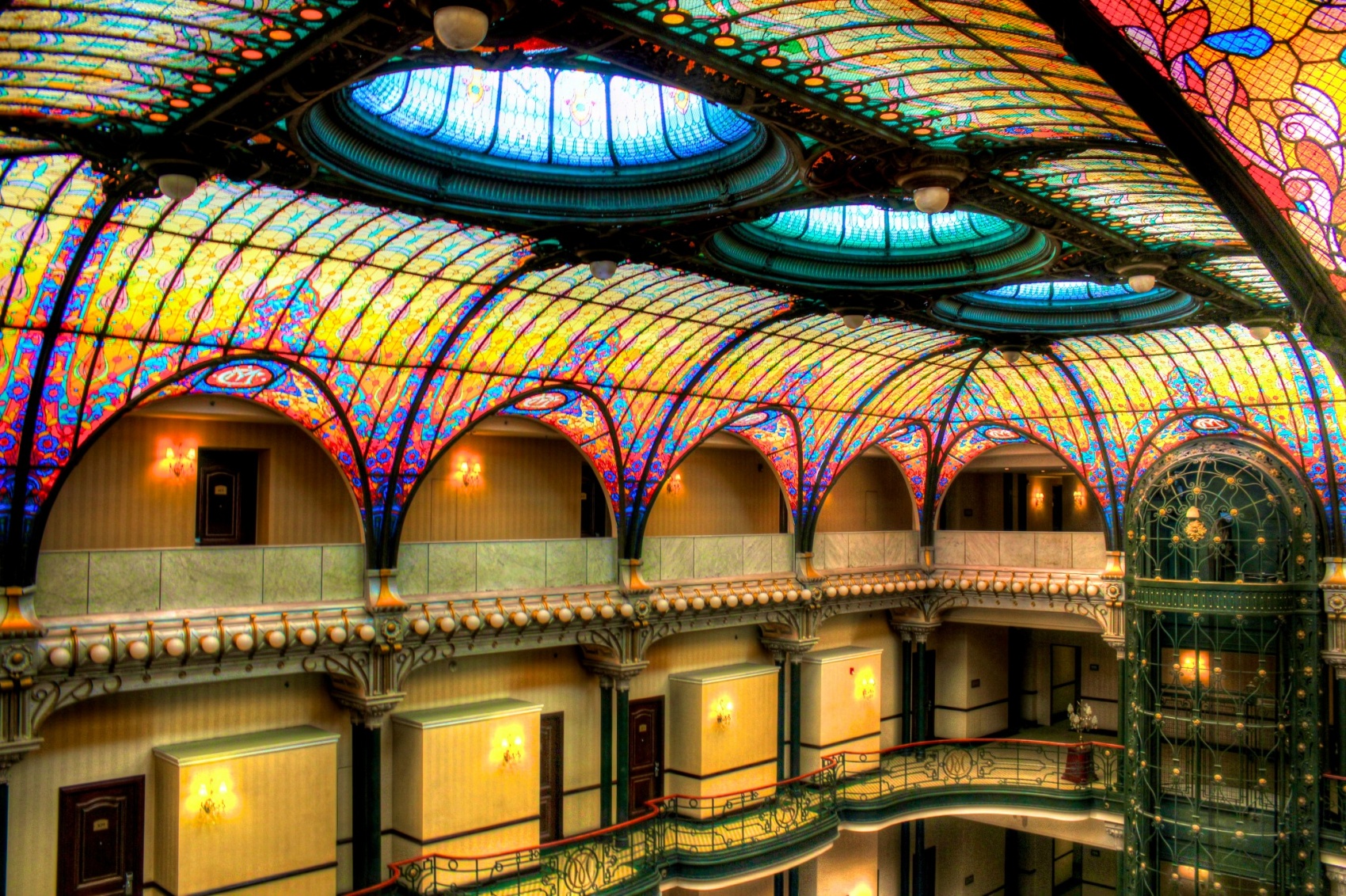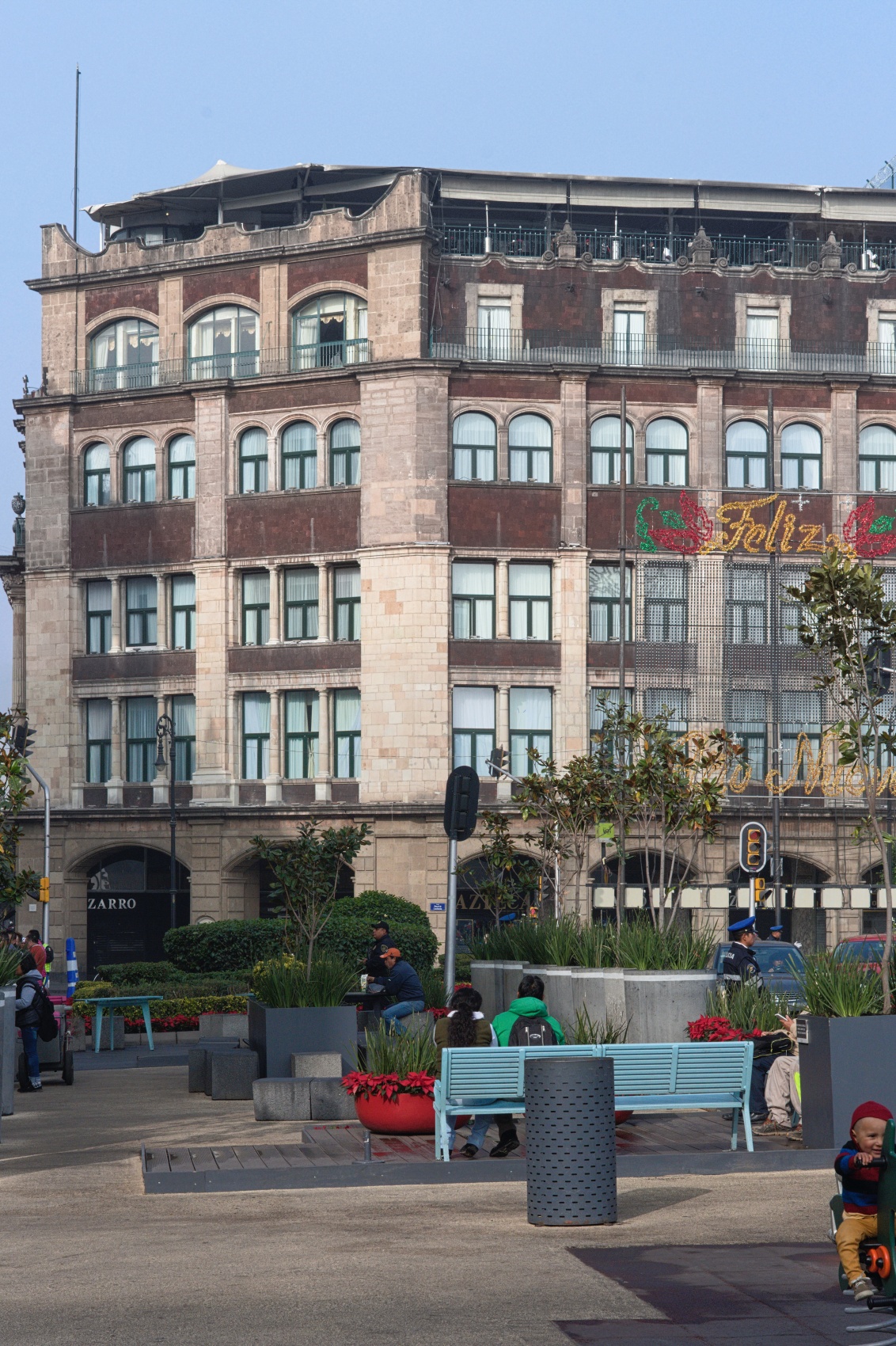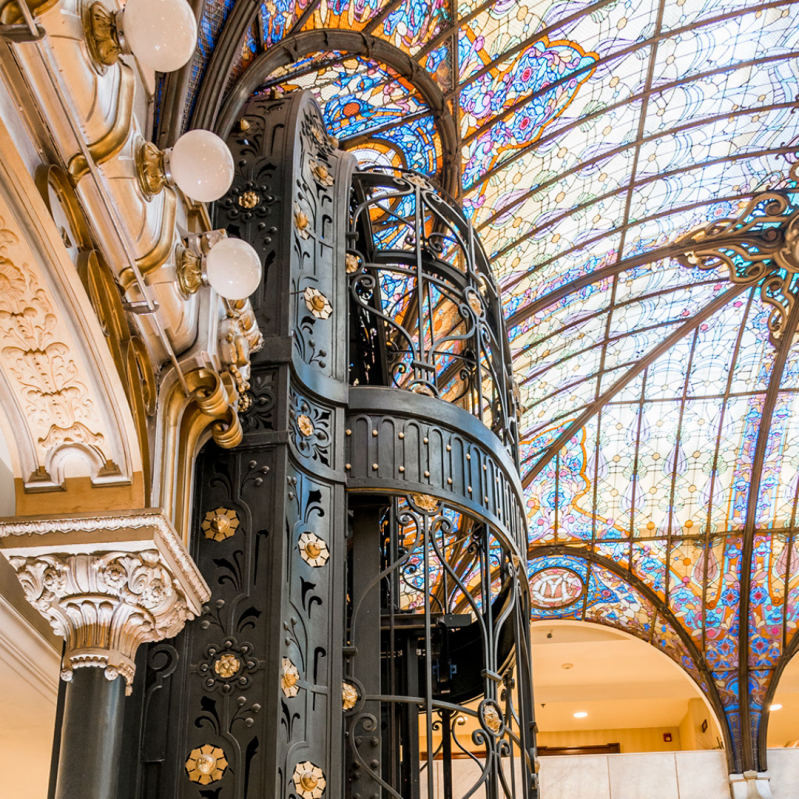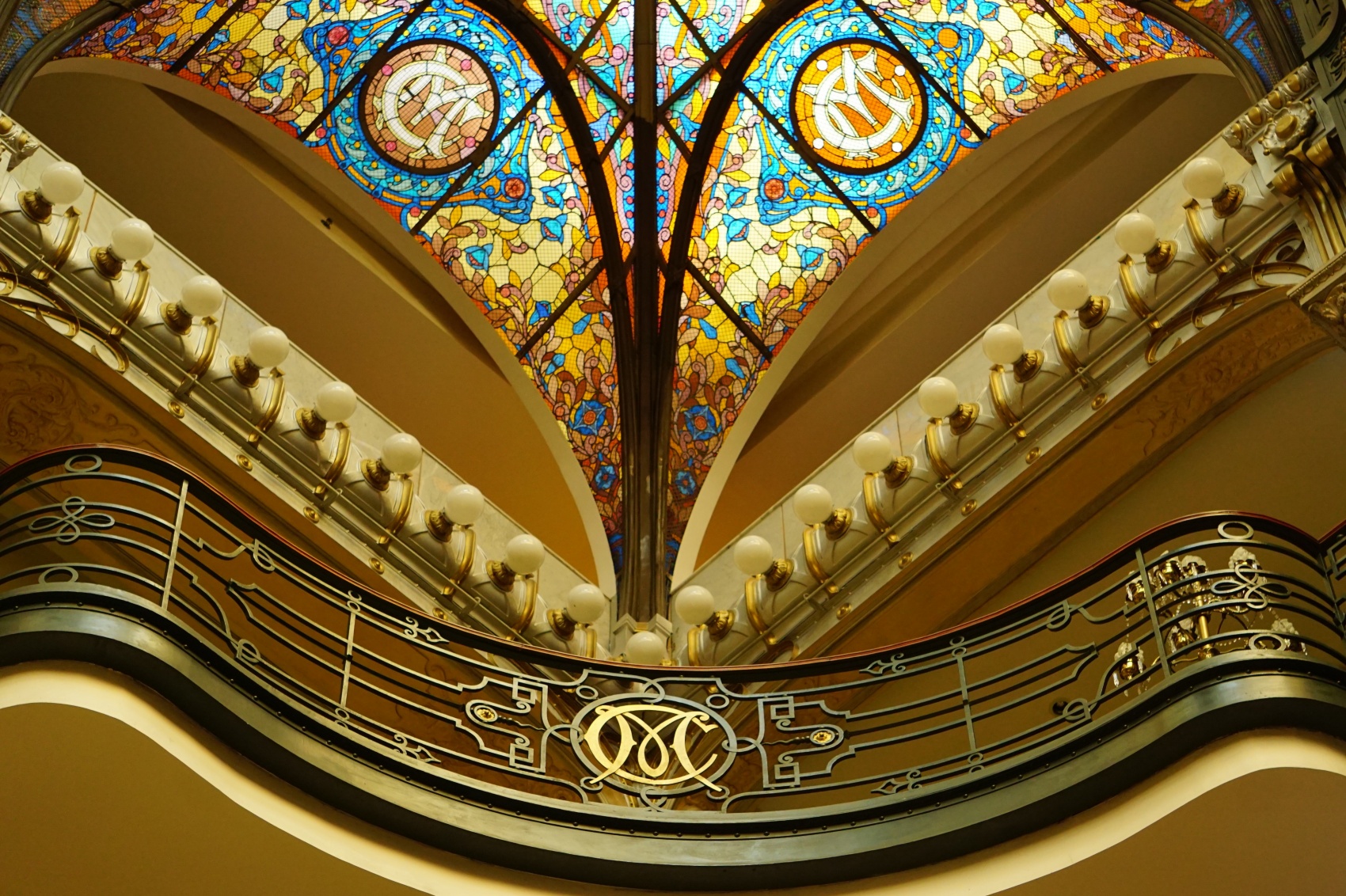This neo-classical hotel conceals a stunning Art Nouveau interior. Built at the end of the 19th century, the Gran Hotel Ciudad de México was once a symbol of the Mexican capital’s modernity. The building was originally intended to be a lavish department store, but in the 1960s it began to serve as a hotel. The building’s roof of steel and 20,000 glass mosaic elements is a true work of art.
Merchants’ Portal
The hotel building is connected to the 16th century Portal de Mercaderes. The Merchants’ Portal was one of the most important commercial centres of the Spanish colony. The great trade pavilion was built on the initiative of a count, Don Rodrigo de Albornoz. Successive generations of aristocrats looked after the building until the end of the 19th century.
The hotel, together with the Merchants’ Portal, is located in the historic centre of Mexico City known as the ‘Zócalo’. The plaza was created on the initiative of Mexico’s main conquistador, Hernán Cortés, which only emphasises the historical significance of the site.
The Zócalo, being the centre of commerce in the city, was the ideal place to build a modern department store. In the last decade of the 19th century, a French merchant took possession of the southern part of the Portal de Mercaderes. The merchant Sebastian Robert raised part of the funds to rebuild the former Albronoz residence and create a department store. Interestingly, one of the founders was the Mexican ambassador to Austria, José de Teresa.
Art Nouveau classicism
The Frenchman commissioned David Garza to design the interior of the department store. The military engineer created a richly decorated interior in the Art Nouveau style. In addition to the ornate glazed tiles, metal elements are also important in Art Nouveau. The exposed lift shafts are made of openwork steel. The constructions are decorated with golden metal flowers. The ornate balustrades and handrails are also impressive. Another modern solution, this time structural, was the steel skeleton of the building made in the manner of the Chicago School.
The facade of the building was arranged in a neo-classical style. Noticeable is the colonnade and pilasters next to the windows. Coat-of-arms cartouches have been placed under the lintels and the floors have been marked by cornices. A large crystal chandelier can be seen through the glass doors. In turn, the hall itself was lined with marble. Later, the classicist wall was enhanced with Art Nouveau elements such as steel balustrades and the inscription above the entrance “Gran Hotel Ciudad de México”.

Glass mosaic
The department store named ‘El Centro Mercantil’ was a great success. Inside you could buy the best quality clothes, jewellery, furniture and crockery. Opened in 1899, the building was therefore a profitable investment for Robert and the ambassador. Eleven years after its completion, the owners decided to renovate and expand the building.
It was in 1910 that a beautiful glass roof was installed. The author of the glass artwork was Jacques Grüber, one of the most important creators of the Nancy School. It was in this French city that the distinctive Art Nouveau ornamentation was born. The Mexican mosaic consisting of 20,000 pieces of coloured Tiffany glass was a display of the house’s wealth. New York glass made from the 1870s onwards by artists from Tiffany Studios became an icon of Art Nouveau. The roof made of their glass was supported by a steel frame. The glass itself was separated by a protective metal mesh. Hidden in the floral and entomological (insect) patterns of the roof are the superimposed initials ‘CM’, standing for Ciudad Mexico (Mexico). Interestingly, this element also runs through the balustrades.
In the 1960s, the department store changed owners. The Gran Hotel Ciudad de México was built in the building. The grand opening took place in 1968, just before the start of the Mexican Summer Olympics. This event further made the hotel famous and cemented the prestige of the building. Today, it is one of the most important accommodations in the country, and the stunning colours of the hotel lobby have made the city famous around the world.
Source: Have Camera Will Travel
Also read: Hotel | Architecture | Monument | Mexico | Curiosities | Art Nouveau



































